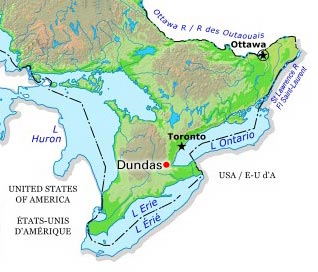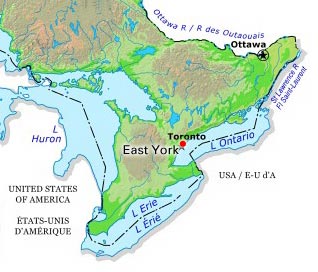Browse "Neighbourhoods"
-
Article
Alexandria
Alexandria, ON, population centre, population 2,906 (2021 census), 2,845 (2016 census). Incorporated as a town in 1903, Alexandria lost this status in 1998 as the result of municipal restructuring in Ontario. It is now part of the new township of North Glengarry (population 10,109). Alexandria is located midway on the Canadian National Railway line between Montreal and Ottawa.
"https://development.thecanadianencyclopedia.ca/images/tce_placeholder.jpg?v=e9dca980c9bdb3aa11e832e7ea94f5d9" // resources/views/front/categories/view.blade.php
https://development.thecanadianencyclopedia.ca/images/tce_placeholder.jpg?v=e9dca980c9bdb3aa11e832e7ea94f5d9
-
Article
Almonte
Almonte, Ont, urban area, population 4752 (2011c), 4538 (2006c). Almonte is located on the Mississippi River, 48 km southwest of Ottawa.
"https://development.thecanadianencyclopedia.ca/images/tce_placeholder.jpg?v=e9dca980c9bdb3aa11e832e7ea94f5d9" // resources/views/front/categories/view.blade.php
https://development.thecanadianencyclopedia.ca/images/tce_placeholder.jpg?v=e9dca980c9bdb3aa11e832e7ea94f5d9
-
Article
Argentia
Argentia, NL, Unincorporated Place. Argentia is located on the west coast of the Avalon Peninsula of Newfoundland.
"https://development.thecanadianencyclopedia.ca/images/tce_placeholder.jpg?v=e9dca980c9bdb3aa11e832e7ea94f5d9" // resources/views/front/categories/view.blade.php
https://development.thecanadianencyclopedia.ca/images/tce_placeholder.jpg?v=e9dca980c9bdb3aa11e832e7ea94f5d9
-
Article
Cape Bonavista
Cape Bonavista, elevation 15-30 m, is the bare, rocky extremity of the Bonavista Peninsula, north of the town of Bonavista in eastern Newfoundland.
"https://development.thecanadianencyclopedia.ca/images/tce_placeholder.jpg?v=e9dca980c9bdb3aa11e832e7ea94f5d9" // resources/views/front/categories/view.blade.php
https://development.thecanadianencyclopedia.ca/images/tce_placeholder.jpg?v=e9dca980c9bdb3aa11e832e7ea94f5d9
-
Article
Deux-Montagnes
The area was first developed for summer cottages. Later, its proximity to Montréal turned this locality into a residential suburb. Tourism and agriculture, once the mainstays of the local economy, have almost disappeared.
"https://development.thecanadianencyclopedia.ca/images/tce_placeholder.jpg?v=e9dca980c9bdb3aa11e832e7ea94f5d9" // resources/views/front/categories/view.blade.php
https://development.thecanadianencyclopedia.ca/images/tce_placeholder.jpg?v=e9dca980c9bdb3aa11e832e7ea94f5d9
-
Article
Dundas
Dundas, Ont, Urban Community within the city of Hamilton. Dundas is located at the west end of Lake Ontario and is situated between 2 faces of the Niagara Escarpment.
"https://d2ttikhf7xbzbs.cloudfront.net/media/media/16ee164e-d06a-4543-9a83-163fa2ae8aa4.jpg" // resources/views/front/categories/view.blade.php
https://d2ttikhf7xbzbs.cloudfront.net/media/media/16ee164e-d06a-4543-9a83-163fa2ae8aa4.jpg
-
Article
Dunnville
Dunnville, Ont, urban area, population 5789 (2011c), 5729 (2006c). Dunnville was established in 1974 as a town in the Regional Municipality of Haldimand-Norfolk from the former townships of Canborough, Dunn, Moulton and Sherbrooke and the town of Dunnville.
"https://development.thecanadianencyclopedia.ca/images/tce_placeholder.jpg?v=e9dca980c9bdb3aa11e832e7ea94f5d9" // resources/views/front/categories/view.blade.php
https://development.thecanadianencyclopedia.ca/images/tce_placeholder.jpg?v=e9dca980c9bdb3aa11e832e7ea94f5d9
-
Article
East York
East York, Ont, Urban Community within the city of Toronto. East York was a borough until it was merged in 1998 into the new city of Toronto.
"https://d2ttikhf7xbzbs.cloudfront.net/media/media/a7323b4e-dfc4-4ae9-83c8-83937b615bf9.jpg" // resources/views/front/categories/view.blade.php
https://d2ttikhf7xbzbs.cloudfront.net/media/media/a7323b4e-dfc4-4ae9-83c8-83937b615bf9.jpg
-
Article
Elmira
Elmira, Ontario, urban area, population 9931 (2011c), 8872 (2006c). Elmira is located about 17 km northwest of KITCHENER-WATERLOO.
"https://development.thecanadianencyclopedia.ca/images/tce_placeholder.jpg?v=e9dca980c9bdb3aa11e832e7ea94f5d9" // resources/views/front/categories/view.blade.php
https://development.thecanadianencyclopedia.ca/images/tce_placeholder.jpg?v=e9dca980c9bdb3aa11e832e7ea94f5d9
-
Article
Flamborough
Flamborough, Ont, urban community within the city of Hamilton. Flamborough was a town from 1985-2001, when it was then merged into the new city of HAMILTON.
"https://d2ttikhf7xbzbs.cloudfront.net/media/media/105ac768-fd5f-418d-a694-0d5e19ae508d.jpg" // resources/views/front/categories/view.blade.php
https://d2ttikhf7xbzbs.cloudfront.net/media/media/105ac768-fd5f-418d-a694-0d5e19ae508d.jpg
-
Article
Grande-Île
This rural municipality has become a residential suburb of Valleyfield and of Greater Montréal. Its population nearly doubled from 1981 to 1996. Even though manufacturing and construction industries play a major role in the local economy, agriculture is still prominent.
"https://d2ttikhf7xbzbs.cloudfront.net/media/media/a9d99302-7475-4efc-9f79-322316675713.jpg" // resources/views/front/categories/view.blade.php
https://d2ttikhf7xbzbs.cloudfront.net/media/media/a9d99302-7475-4efc-9f79-322316675713.jpg
-
Article
Griffintown
Griffintown was developed in the 19th century as a working-class Irish neighbourhood of Montréal. It underwent several attempts at urban revitalization from the 1980s onwards. Since 2010, there have been a number of controversial real estate developments in the neighbourhood. The neighbourhood is part of the Sud-Ouest and Ville-Marie boroughs of Montréal. It is located along the Lachine Canal, between Notre-Dame, McGill and Guy streets.
"https://d2ttikhf7xbzbs.cloudfront.net/View-2942.jpg" // resources/views/front/categories/view.blade.php
https://d2ttikhf7xbzbs.cloudfront.net/View-2942.jpg
-
Article
Hudson
This wealthy residential suburb of Montréal is proud of its stately homes, and its residents also highly value a great variety of sports and cultural activities. The town's economy lacks an industrial base.
"https://d2ttikhf7xbzbs.cloudfront.net/media/media/138d11c8-39df-4cf2-9c45-897962add14b.jpg" // resources/views/front/categories/view.blade.php
https://d2ttikhf7xbzbs.cloudfront.net/media/media/138d11c8-39df-4cf2-9c45-897962add14b.jpg
-
Article
Kleinburg
Kleinburg, Ont, straddles a hogback between 2 branches of the Humber River 40 km NW of Toronto. It has no legal entity, being part of the sprawling city of Vaughan (formerly Vaughan Township), and therefore no official boundaries. Founded around 1847 by an Alsatian immigrant, John Kline (sic), who built the first gristmill, it is known today as the site of one of Canada's largest art galleries, the McMichael Canadian Art Collection; for the Toronto...
"https://development.thecanadianencyclopedia.ca/images/tce_placeholder.jpg?v=e9dca980c9bdb3aa11e832e7ea94f5d9" // resources/views/front/categories/view.blade.php
https://development.thecanadianencyclopedia.ca/images/tce_placeholder.jpg?v=e9dca980c9bdb3aa11e832e7ea94f5d9
-
Article
Montreal's Little Italy
The product of two major Italian immigration cohorts to Canada (one from 1880 until the First World War, and the other from 1950 to 1970), Montreal’s Italian Canadian community has been gathering in the Notre-Dame-de-la-Défense parish since 1910. This neighbourhood, nestled within the Rosemont-La Petite-Patrie borough, is located along Saint-Laurent Boulevard, with Saint-Zotique and Jean-Talon streets marking its limits. Always at the heart of Italian-Canadian community and cultural life in Montreal, Little Italy (Piccola Italia) is known for its buildings’ remarkable architecture and decor. It is also home to a true institution of Montreal’s cityscape: the Jean‑Talon Market.
"https://d2ttikhf7xbzbs.cloudfront.net/media/media/b11aa219-9b12-4d95-a4b5-29522e0bbbf8.JPG" // resources/views/front/categories/view.blade.php
https://d2ttikhf7xbzbs.cloudfront.net/media/media/b11aa219-9b12-4d95-a4b5-29522e0bbbf8.JPG

